A growth strategy that protects the climate
From day one, the Commission has been fully committed to transforming the EU into a clean, resource-efficient, and competitive economy, in line with the goals of the Paris Agreement. The European Green Deal was designed as the EU’s compass to achieve those goals. It aims to ensure zero emissions by 2050, making Europe the first climate-neutral continent in the world.
Social, economic, and geopolitical developments in the last years have confirmed that this course of action is critical. The transition to clean energies and technologies has become, even more than before, an incentive for economic growth and innovation. Furthermore, Russia’s aggression against Ukraine has underlined our need to reduce dependencies from unreliable partners and boost our own energy autonomy thanks to renewables, energy efficiency and other Green Deal policies.
In 2021 the EU adopted its first European Climate Law. It set in stone Europe's goals to become climate-neutral by 2050, as well as a target of 55% less emissions by 2030, in comparison to 1990. As required under the Climate Law, the Commission also recommended, in February 2024, an additional intermediate target of 90% less emissions by 2040, confirming our direction of travel.
Creating the right enabling environment
But the European Green Deal is about more than setting targets. It is also about creating the right enabling environment. This is first and foremost about putting people at the core of the transition. That’s why we have been ensuring that the clean transition is just and fair, by supporting both those that are more vulnerable in the clean transition and most affected by the effects of climate change.
With the Just Transition Fund, we have supported workers and regions to develop new skills and thrive in the green economy. Likewise, the Social Climate Fund, partly funded via the EU Emissions Trading System, will provide Member States with dedicated funding to support vulnerable groups thanks to investments in energy efficiency, renovation of buildings, and clean heating, amongst others.
Meanwhile, instruments such as the EU Solidarity Fund and the EU Civil Protection Mechanism have brought support where it has been needed most, including farming communities, after climate-related disasters such as wildfires, storms, and floods.
Secondly, in order to achieve our climate-neutrality goal, we also need an energy system that is cleaner, more efficient and no longer dependent on fossil fuels. For that, we need to ensure that capital flows in right direction, and that people and businesses can access the financing they need to carry out green investments.
Thirdly, we have mobilised private and public funding that support the deployment of low-carbon energy sources and that increase the energy efficiency of buildings.
An estimated €275 billion of NextGenerationEU and REPowerEU funds will support clean investments, and €118 billion of Cohesion Policy until 2027 are earmarked for the clean transition.
We updated the EU Emissions Trading System to cover more activities, thereby motivating more economic sectors to implement reforms towards the clean transition. This generates more revenues that are reinvested in innovation, climate action, and social support, for example through the Innovation Fund, the Modernisation Fund, and the Social Climate Fund.
And we have approved nine major Important Projects of Common European Interest involving 22 Member States. These ambitious projects concern, for example, batteries, microelectronics, hydrogen, and cloud computing. With State aid amounting to €35.3 billion, they will unlock at least €59.5 billion of additional private investments.
Fourthly, we have ensured that our economy and our industries are fit for the clean era and that they reap the benefits of the transition, while we act to maintain a level playing field with our economic competitors.
In February 2023, we adopted the Green Deal Industrial Plan, which includes the Critical Raw Materials Act and the Net-Zero Industry Act. These Acts, both of which were adopted in 2024, create a predictable and simplified regulatory environment in their respective fields of action, and will enable the scaling up of manufacturing capacity for the net-zero technologies and products that our economy needs.
We also supported the development of the infrastructure and innovative technologies that we need to reduce emissions. We supported battery manufacturing in the EU and the development of clean hydrogen. We set out requirement to ensure that EV charging stations will be available every 60km in the trans-European transport network. And with our Carbon Border Adjustment Mechanism, we address carbon leakage, making sure that emissions are reduced wherever they are produced, not simply off-shored.
Fifthly, this Commission has also laid the groundwork to build a more circular and resource-efficient economy.
Protecting biodiversity and ecosystems
In line with the Kunming-Montreal Global Biodiversity Framework we have worked to restore biodiversity, address pollution, and make efficient use of resources. We have presented actions to reverse loss of pollinators by 2030, make batteries more user-replaceable, and to reduce packaging and packaging waste.
And our new Zero Pollution Action Plan lays out proposals for modernised standards on water quality, air quality, industrial emissions and chemicals.
Working with stakeholders
Finally, this Commission has made a priority of a true dialogue with stakeholders to ensure that we address the challenges of the clean transition together. That is why we launched a series of clean transition dialogues with key industrial sectors as well as a Dialogue on the Future of EU Agriculture.
Key policies and achievements
- Making the EU climate neutral by 2050
- Protecting vulnerable workers and societies
- Supporting people and regions affected by increasingly frequent climate events
- Supporting farmers to withstand the consequences of climate change
- Financing green reforms and investments
- Putting a price on carbon
- Improving energy efficiency, energy security and reducing dependence from Russia thanks to REPowerEU
- Enhancing the competitiveness of Europe’s net-zero industry
- Keeping our green industry competitive and avoiding carbon-leakage with the Carbon Border Adjustment Mechanism
- Restoring the wealth of our environment
- Clean transition dialogues to listen to relevant stakeholders
Making the EU climate neutral by 2050
At the heart of the Commission’s European Green Deal is the objective to become climate neutral by 2050, an objective which Member States and the European Parliament have subscribed to unanimously. This means that by 2050 the EU will significantly reduce its greenhouse gas emissions, while remaining emissions will be captured by technology or in natural carbon sinks, such as forests.
Among the first key elements of the Green Deal, the EU Climate Law entered into force in July 2021 and made binding the climate neutrality commitment. It also set a target to reduce net emissions by at least 55% by 2030, in comparison to 1990 levels. The Law also requires a 2040 target to be set, for which the Commission made a recommendation in February 2024 of a 90% reduction by 2040 relative to 1990 levels. Setting clear targets gives certainty to businesses and investors about the direction of travel and ensures that Europe has a clear path towards its long-term goals.
 55%cut in CO2 emissions by 2030 compared to 1990 levels
55%cut in CO2 emissions by 2030 compared to 1990 levels Almost €400 billionof EU funds are funding climate-related projects
Almost €400 billionof EU funds are funding climate-related projects
Protecting vulnerable workers and societies
Nobody should be left behind in the clean transition. To support regions that are most affected by the socio-economic impact caused by the clean transition, the Commission came forward with the Just Transition Fund with a total allocation of €19.7 billion. The Just Transition Fund directs investments into these regions to diversify economic activities towards cleaner industries and reskill workers for new sources of employment. For example:
- Ida Viru, in Estonia, used to rely heavily on oil shale. Thanks to €354 million from the Just Transition Fund, some 11,000 workers and jobseekers are receiving reskilling and upskilling opportunities that will provide them with mobility solutions to new businesses with greener jobs.
- Norrboten county, in northern Sweden, is a centre of the Swedish steel industry. The Fund is backing the H2-Labs project, which will receive €7 million in EU and national funding. The project wants to develop a test bed in Norrboten to explore the production of hydrogen. In enough quantities, climate-neutral hydrogen could replace the use of fossil fuels in steel production, thereby increasing the industry’s competitiveness and minimising social costs.
Similarly, the Commission created a Social Climate Fund, which will provide Member States with dedicated funding, including via our carbon pricing mechanism, to support vulnerable groups such as households in energy or transport poverty. Member States may use the Social Cilimate Fund funding to invest in energy efficiency, renovation of buildings, clean heating, and they can also spend part of the resources on temporary direct income support.
Supporting people and regions affected by increasingly frequent climate events
Climate change is making extreme weather events more frequent, causing widespread damage in entire communities. As these events become more common, the Commission has stepped up its action to support Member States and people on the ground.
Mountain rescue service evacuates people's belongings by boat across the river Savinja in Raduh, Slovenia, after major flooding hit two thirds of the country in 2023.
The EU Solidarity Fund has become one of the main expressions of EU solidarity in the wake of disasters. Since 2019, €2.8 billion has been provided to 13 Member States and one accession country, Türkiye in the wake of climate disasters. For instance, €20.9 million were provided to support the Italian provinces of Pesaro-Urbino, Ancona, and Macerata in the Marche, following intense rainfall and flooding in September 2022. And between March and August 2022, when Romania was affected by a severe drought, the Fund provided €33.9 million in support.
With NextGenerationEU, we are also providing financing for national projects that address climate change mitigation. For example, Greece’s recovery plan includes measures to boost civil protection and response in the face of wildfires and floods, as well as the climate-proofing of transport infrastructure.
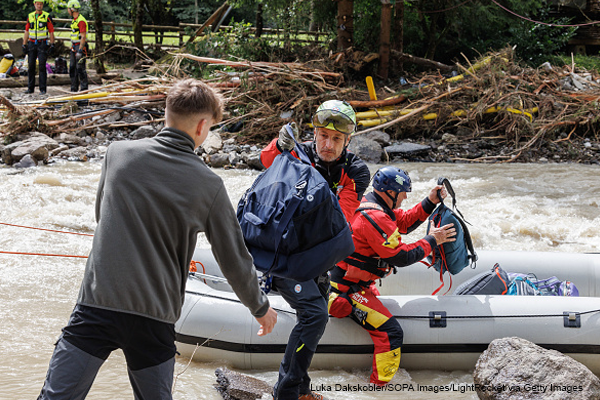
Similarly, the Slovenian recovery plan includes measures to address floods, and following the floods of August 2023, we set up a task force of Commission and Slovenian representatives to study ways of better supporting affected areas with existing EU funding.
Moreover, the EU Civil Protection Mechanism supports countries in Europe and beyond when struck by climate-related emergencies. The Emergency Response Coordination Centre acts as a coordinator between Member States, the affected country, and civil protection and humanitarian experts, enabling the delivery of crucial support on the ground, but also in the forms of satellite mapping and modelling and training.
In 2023, the Emergency Response Coordination Centre coordinated support to countries amidst catastrophic floods and unprecedented wildfires.
When the Italian region of Emilia Romagna was affected by floods, 110 emergency responders were deployed to the area, and along with international teams pumped an estimated volume of almost three million cubic meters of water.
When Slovenia was hit by floods, the EU Civil Protection Mechanism deployed 300 experts from other European countries to support on the ground, along with excavators, dump trucks, vehicles, helicopters, and bridges.
And when violent wildfires spread across Greece, Cyprus, Italy, and Tunisia, the Mechanism responded by enabling the deployment of firefighting planes, helicopters and around 2 000 personnel, including firefighters, to tackle the emergency
An employee holding several strawberries harvested in the field
The Commission has also taken unprecedented steps to increase support to farmers and rural communities when they are impacted by climate-related disasters. Farmers in 23 Member States received over €400 million to cope with the impacts of climate events and higher input costs. This includes Spain and Portugal, for example, where severe droughts have hit farmers repeatedly, and several regions of Italy affected by floods. Additionally, in Greece and Slovenia farmers affected by the 2023 floods were supported directly with €50 million.
To further support farmers, the Commission has also given Member States flexibility to complement EU support by up to 200% with national funds, and to provide higher advance payments of CAP funds to improve farmers’ cash flow.
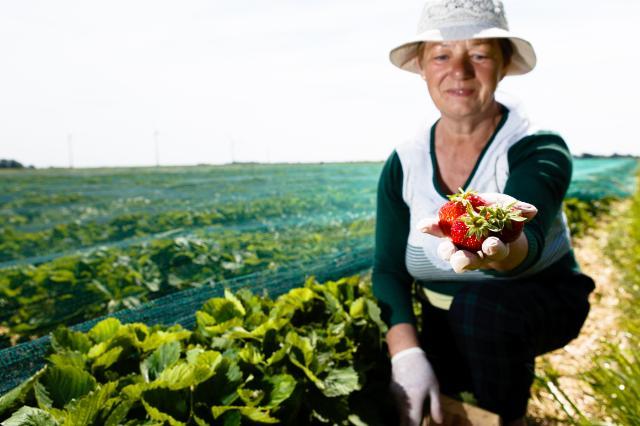
Financing green reforms and investments
The Commission has set as an objective that one third of the €1.8 trillion investment from the NextGenerationEU and the EU’s seven-year budget is used to finance the Green Deal.
NextGenerationEU is a key funding tool for the clean transition and the target of investing 37% of its funds in climate investments has been exceeded, reaching 42%. This includes over €62 billion from the 25 approved REPowerEU national chapters which will contribute to affordable, secure and sustainable energy.
Thanks to climate action investments under NextGenerationEU, 9.8 million people in the EU have benefitted from protection measures against climate-related disasters, and 34 million megawatts hours in energy consumption have been saved. In France, NextGenerationEU financed the energy efficient renovation of 20 000 social dwellings and of student housing. In Spain, it supported over 60 companies in research and innovation for sustainable mobility.
Cohesion Policy has also played its part. A total of €118 billion from Cohesion Policy is specifically earmarked for climate action ranging from infrastructure and sustainable urban mobility to energy efficiency and renewable energy.
Furthermore, the European Regional Development Fund and the Cohesion Fund have an ambitious target of investing at least 30% and 37% of their capacity respectively in climate action.
By 2027, Cohesion Policy will have contributed to the construction of 1 230 km of sustainable tram and metro lines, and 12 200 km of cycling infrastructure. Clean water and wastewater infrastructure will also reach 16.4 million people.
State aid rules, such as the Climate, Energy and Environment Aid Guidelines adopted in January 2022, have helped Member States reach the Green Deal objectives by providing public financing to ensure that companies carry out the necessary investments at the least possible cost for taxpayers and without unduly distorting competition.
Since September 2019, the Commission has approved more than €400 billion in State aid for non-crisis related energy measures, including for renewables, energy storage and infrastructure.
The Commission also adopted a State aid Temporary Crisis and Transition Framework in March 2023 to support measures in sectors that are key for the clean transition. Since then, the Commission has approved almost €13 billion in State aid measures to speed up investments and financing for clean-tech production.
Important Projects of Common European Interest (IPCEIs) are another key tool for innovation. In recent years, the Commission has approved nine IPCEIs with the participation of 22 Member States, in the fields of batteries, microelectronics, hydrogen, and cloud computing. They consist of 291 projects from 254 companies with a State aid amount of €35.3 billion, unlocking at least an additional €59.5 billion in private investments. Hy2Tech, for example, will develop technologies for the entire hydrogen value chain to decarbonise industrial processes and mobility.
Putting a price on carbon
The EU Emissions Trading System, our world-leading carbon pricing mechanism, has also played a key role in generating public revenue to be reinvested in climate action and social support.
Since its launch in 2005, the Emissions Trading System has produced over €180 billion in revenue for Member States and the EU budget, part of which has been used to finance the Innovation Fund, the Modernisation Fund, and the Social Climate Fund.
With the European Green Deal, we added more sectors to be covered by the Emissions Trading System, from industries and power plants to fuels for transport and buildings, thereby putting a price on more emissions. This will continue to shrink emissions and boost alternative energy sources.
Improving energy efficiency, energy security and reducing dependence from Russia thanks to REPowerEU
In view of Russia’s invasion of Ukraine, the Commission proposed to end Europe’s imports of Russian fossil fuels as quickly as possible with the REPowerEU Plan. One of the measures proposed by REPowerEU was to drastically accelerate permitting procedures for renewable energy projects. The first results are already visible. Since we launched the European Green Deal in 2019, we have more than doubled the amount of solar energy produced, and in 2023, we produced, for the first time, more electricity from wind than from gas.
Increasing the share of renewables in the electricity mix and reducing overall energy demand contributed to reducing energy prices to pre-war levels. The agreed reform of the electricity market will further contribute to this.
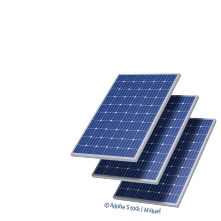 More than doublethe amount of solar energy produced since 2019
More than doublethe amount of solar energy produced since 2019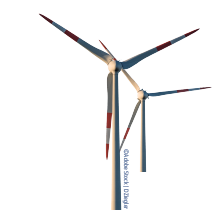 More electricity from wind than gasproduced for the first time in 2023
More electricity from wind than gasproduced for the first time in 2023
The other pillar of the REPowerEU Plan is diversification of supply, to replace those Russian supplies which cannot yet be covered by renewables and demand reduction. Europe has found new reliable partners, with Norway becoming our largest supplier of pipeline gas, and the US providing the largest share of liquefied natural gas (LNG) imports.
We also put in place the EU Energy Platform which has allowed us to pool demand for gas from different European companies and launch competitive tenders on the international market to respond to this common demand. In 2023, the platform matched over 42 billion cubic meters of gas between European buyers and sellers, with over 180 companies across Europe and beyond participating.
The Commission has made sure that the European Green Deal contributes to Europe’s economic growth, because what is good for the climate can also be good for our economy. In February 2023, we adopted the Green Deal Industrial Plan. The Plan creates conditions for the scaling up of manufacturing capacity for the net-zero technologies and products required to meet Europe’s climate targets.
Two key pieces of the Plan are the Critical Raw Materials Act and the Net-Zero Industry Act, adopted by the co-legislators in the first half of 2024. Both will create a predictable and simplified regulatory environment in their respective fields of action, encouraging investments and the development of projects that are key to the European economy.
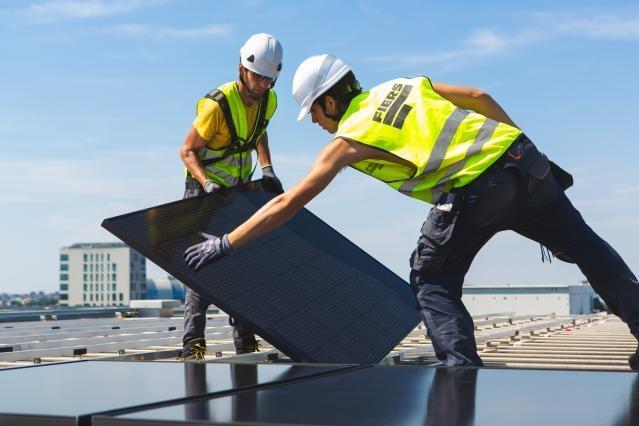
The Critical Raw Materials Act has been adopted by the Parliament and the Council. When it enters into force it will help ensure the EU’s access to a secure, diversified, affordable and sustainable supply of critical raw materials. It will help increase domestic capacities for critical raw materials along the supply chain. The ultimate goal is that the EU should have the capacity to extract 10%, process 40%, and recycle 25% of its annual consumption of strategic raw materials by 2030.
As for the Net-Zero Industry Act, it will boost the manufacturing of net-zero technologies in the EU and strengthen their resilience and competitiveness, while creating a regulatory environment with better conditions to set up net-zero projects in Europe and attract investments.
Keeping our green industry competitive and avoiding carbon-leakage
The Commission put in place the world’s first Carbon Border Adjustment Mechanism (CBAM). It encourages industries worldwide to embrace greener production methods and discourages firms from relocating outside the EU to countries with less stringent environmental standards. CBAM is a WTO-compliant tool, and it will ensure that the EU's climate objectives are not undermined.
Bytom modern Steel Service Centre (SSC) dedicated for thin gauge material, serving automotive, appliance and industry segment
In practice, EU importers of goods covered by CBAM will have to register with national authorities and buy CBAM certificates. They will then declare the emissions embedded in their imports and surrender the corresponding number of certificates. If they can prove that a carbon price has already been paid during the production of the goods, the corresponding amount will be deducted.
CBAM is a landmark tool to put a fair price on carbon-intensive goods that enter the EU. The gradual introduction of the CBAM is aligned with the phase-out of the allocation of free allowances under the EU Emissions Trading System to support the decarbonisation of EU industry.
On 1 October 2023, CBAM entered into application in its transitional phase. This phase will serve as a learning period for importers, producers, and authorities. It will allow the Commission to collect useful information on embedded emissions in order to refine the methodology for the definitive entry into application, which is set to 2026.

Restoring the wealth of our environment
Climate neutrality is reachable only if we restore biodiversity, address pollution, and make good use of resources. To better use scarce resources and reduce waste, we adopted measures to make products more sustainable, reducing the 2.2 billion tonnes of waste the EU produces each year. For example
- batteries will become more sustainable and user-replaceable in all consumer products
- companies will have to design products to facilitate repairing rather than disposal
- packaging and packaging waste will be reduced
- there will be a ban on the practice of destroying unsold consumer products, notably textiles and footwear
The strong focus on making smarter use of materials is illustrated by the New European Bauhaus, a cultural movement that involves Europe’s creative community in making the Green Deal beautiful, sustainable and inclusive. The initiative has grown into a movement with an active community from all Member States. With over 600 official partner organisations ranging from EU-wide networks to local initiatives, the New European Bauhaus now reaches millions of citizens. Six large-scale, replicable local transformation projects – ‘NEB demonstrators’ – were launched in 2022, and millions of euros invested in small projects all around the EU.
The European Green Deal has also been helping reduce pollution. The Commission’s Zero Pollution Action Plan resulted in proposals for modernised standards on water quality, air quality, industrial emissions and chemicals, which also include more transparency and clearer financing, so pollution costs fall less on the taxpayer. These standards will ramp up in the coming decades, offering huge health benefits. For example, new air pollution standards alone will reduce premature deaths, stroke, cancer and diabetes.
Furthermore, our Farm to Fork Strategy intends to make food supply systems fair and healthy, safeguard EU food security and affordability, while rewarding farmers for providing environmental and climate-friendly services. The Commission has proposed new rules for certain new genomic techniques to ensure a high level of health protection whilst contributing to sustainability and innovation. Likewise, we have proposed legally binding food waste reduction targets to be achieved by Member States by 2030, and new rules on the protection of animals during transport.
Meanwhile, we spearheaded the Kunming-Montreal Global Biodiversity Framework, agreed at the COP15 on biological diversity, which sets global targets, for example for restoring and protecting ecosystems and reducing pesticides risks by half until 2030; and our leadership was also critical for a global deal on protecting biodiversity on the high seas with the UN High Seas Treaty concluded in 2023.
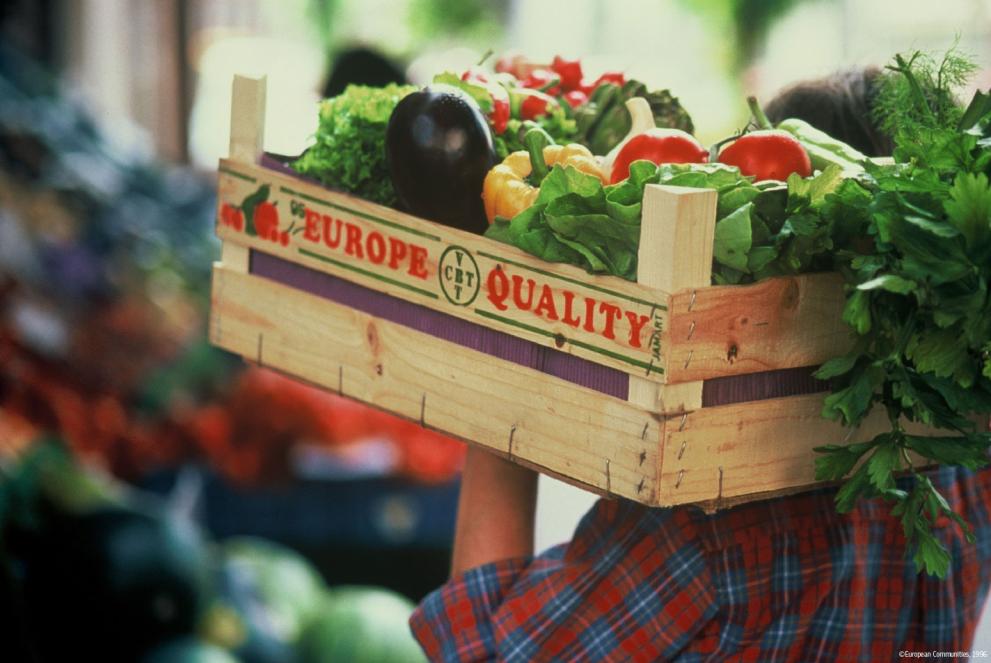
Clean transition dialogues
To ensure the implementation of the Green Deal we launched a series of clean transition dialogues with key industrial sectors. These dialogues ensure that we deliver the European Green Deal in close partnership with stakeholders, working together to overcome obstacles, and share positive experiences and advice.
Nine clean transition dialogues have taken place so far, focused on hydrogen, energy-intensives industries, clean tech, energy infrastructure, critical raw materials, forest-based bioeconomy, cities, clean mobility, and steel.
The Commission also launched a Strategic Dialogue on the Future of EU Agriculture. for which a final report was presented in September 2024. The Dialogue brought together farmers, local food store owners, European retailers, consumer organisations, environmental groups, financial institutions and academia to share ideas and find common solutions on the future of the agri-food sector in Europe.



